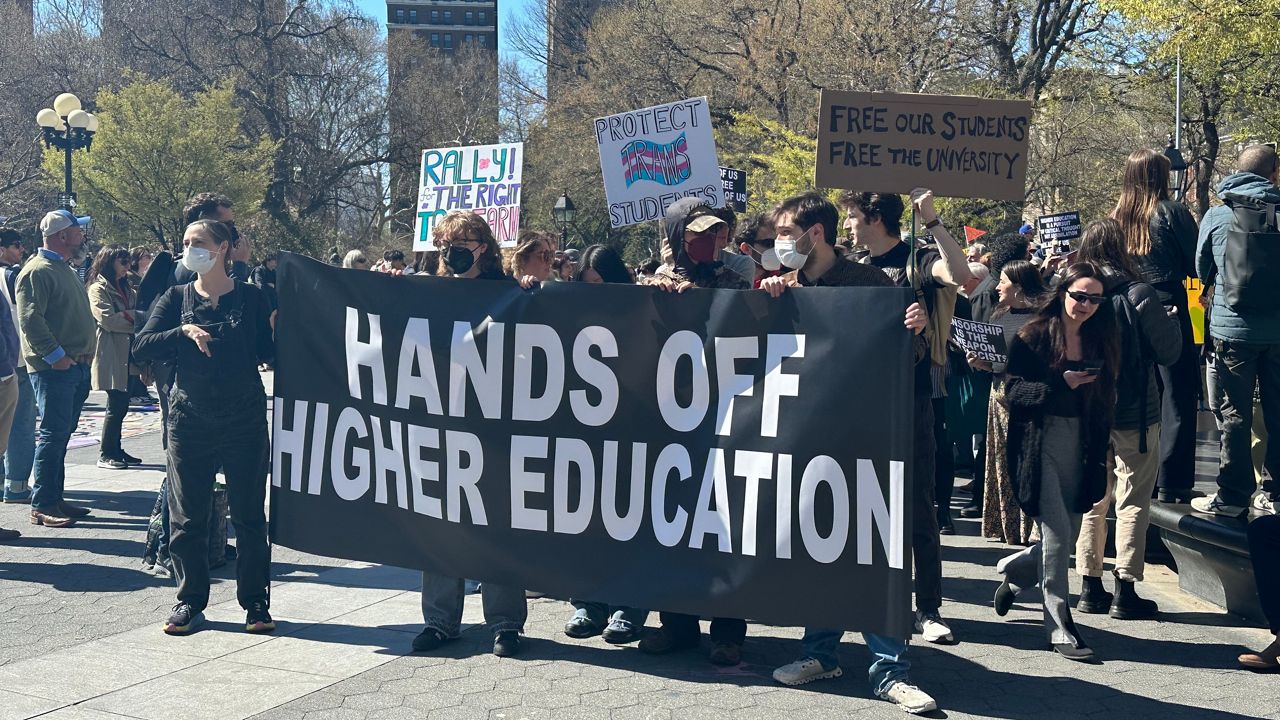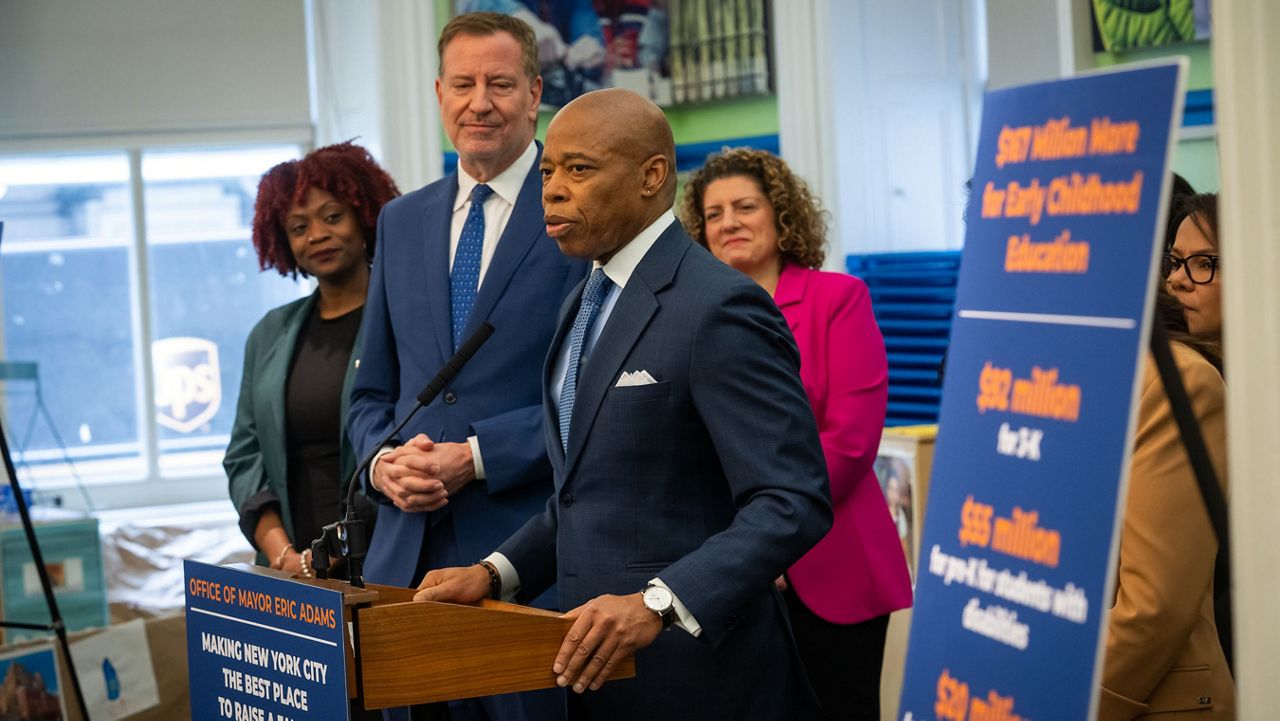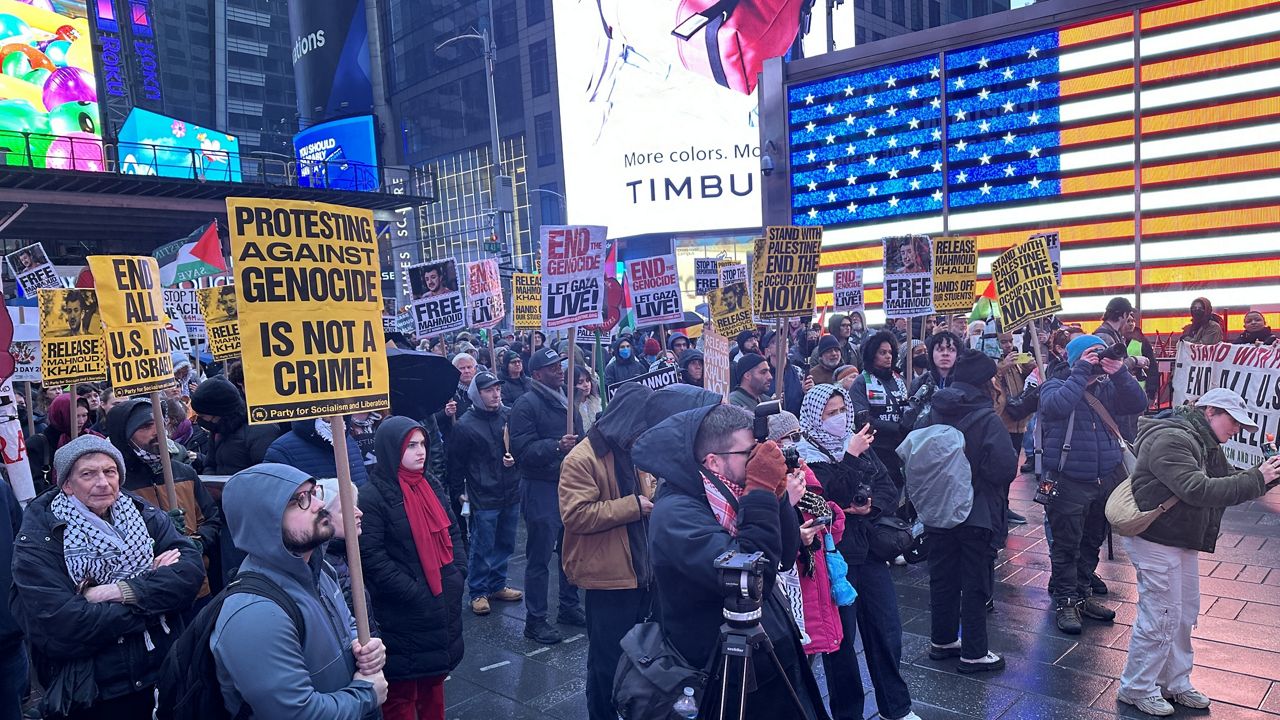The city education department launches new teams to organize donations and support efforts to educate thousands of children whose parents have arrived in New York seeking asylum.
Turning to the community for help is an approach Schools Chancellor David Banks says has worked at P.S.18 in the Bronx, which is now serving thirty-seven newly arrived students who are living in a nearby shelter.
“We are replicating his success citywide by establishing what we call borough response teams and they are developed to help organize donation drives to support our newest New Yorkers, leveraging the incredible generosity of our communities,” Banks said.
But even as the city turns to the kindness of New Yorkers, questions remain about whether the Education Department is doing enough itself to serve the children.
Dozens of children have enrolled at P.S.33 in Chelsea, where a parent told NY1 just one science teacher speaks Spanish.
That’s left bilingual students like eight-year-old Glerynes Polanco to translate for her newly arrived classmates.
“They like don’t understand what my teacher says and my teacher makes me translate because sometimes she doesn’t get how to speak Spanish,” Glerynes said.
Sometimes, she said, she turns to her former science teacher to help her — because she has too much work of her own.
“If they have work and I have work, I have to do my work too,” she said. “I’m not a grownup yet, but I wish I could be and help them a lot. But I’m not a grown up yet.”
NY1 asked Banks when some grown-ups might arrive to help.
“It is very much a work in progress,” he said, noting the city has long struggled to hire bilingual educators.
There are three programs that serve children learning English in the city.
Dual language programs offer equal instruction in English and Spanish — with the goal of becoming fluent in both.
Transitional bilingual education programs offer some instruction in each language — but the amount of English increases as students become more fluent.
P.S.33 uses the English as a New Language model — with instruction in English and support in a child’s home language. In these classrooms, children learning English may have different home languages, and the teacher may not speak any of them.
Having students translate for one another is part of the city’s strategy.
“That’s also part of us developing a warm culturally linguistic environment that supports all students. That said, we do understand that we need more bilingual adults to support our students and so we are actively looking to expand our bilingual educators, social workers,” Melissa Ramos, senior executive director of program implementation at the DOE, said.
The city is now pursuing partnerships with the Dominican Republic and Puerto Rico to grow the ranks of bilingual staff.
“We’re going to have to think out of the box to do this. Because the teachers are not sitting there — we would hire them tomorrow. We’ve got to recruit them. We’ve got to go to other places to meet that need,” Banks said.






_DNT_Columbia_Protest_CLEAN_FOR_APPROVAL)


